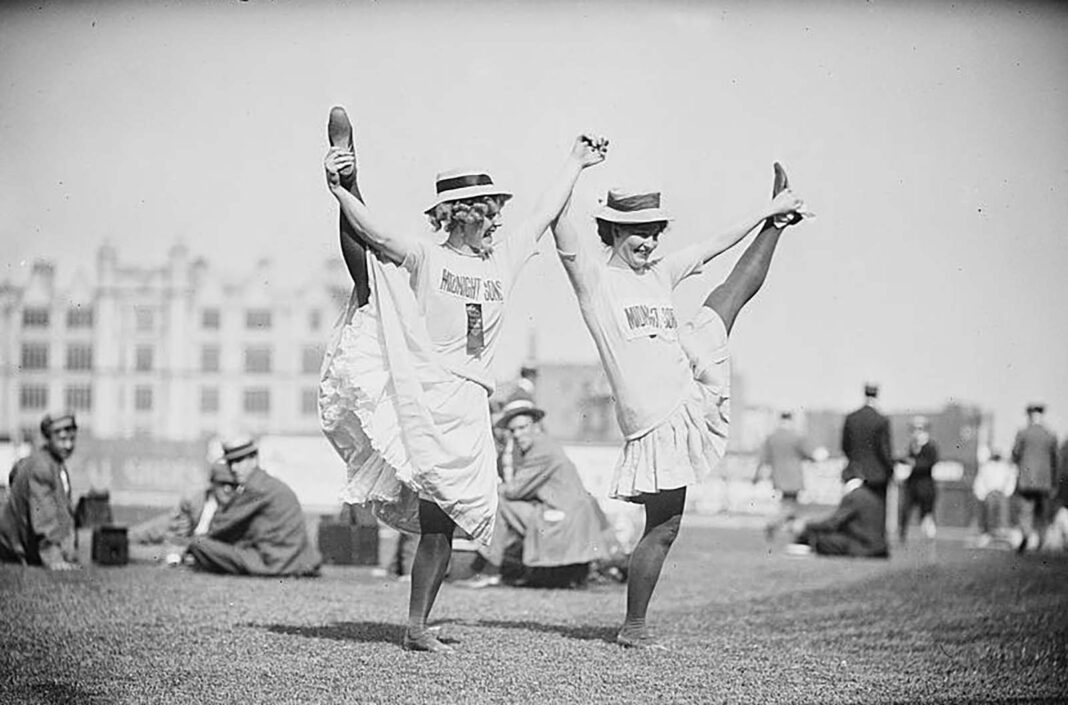Cheerleading has long been a fixture of American sports culture, combining energy, performance, and a sense of tradition.
What began as simple chants from the stands gradually evolved into an organized activity that blended athleticism with entertainment.
At its core, cheerleading was designed to rally players, excite the crowd, and showcase school or team spirit.
Over time, it transformed into a sport of its own, carrying a rich history that reflects changing roles, styles, and cultural values.
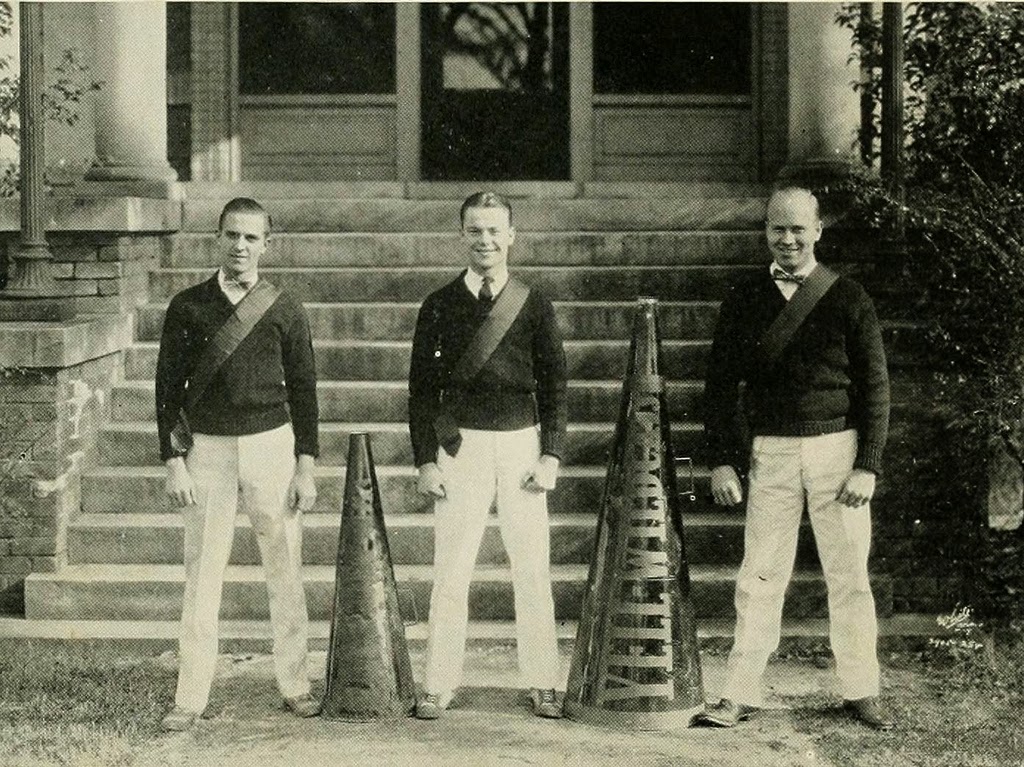
Cheerleaders, Davidson College, 1925.
In its earliest days, cheerleading looked very different from what people recognize today. Surprisingly, the activity was originally dominated by men.
Crowds at college football games in the late 19th century were often led by male students who organized chants and cheers.
One of the first recorded examples appeared at Princeton University in 1877 with a spirited yell known as the “Princeton Cheer.”
The chant—“Hurrah! Hurrah! Hurrah! Tiger! S-s-s-t! Boom! A-h-h-h!”—was shouted by students and even by athletes themselves, setting the tone for how organized cheering would spread. The cheer, slightly modified, is still known today as the “Locomotive.”
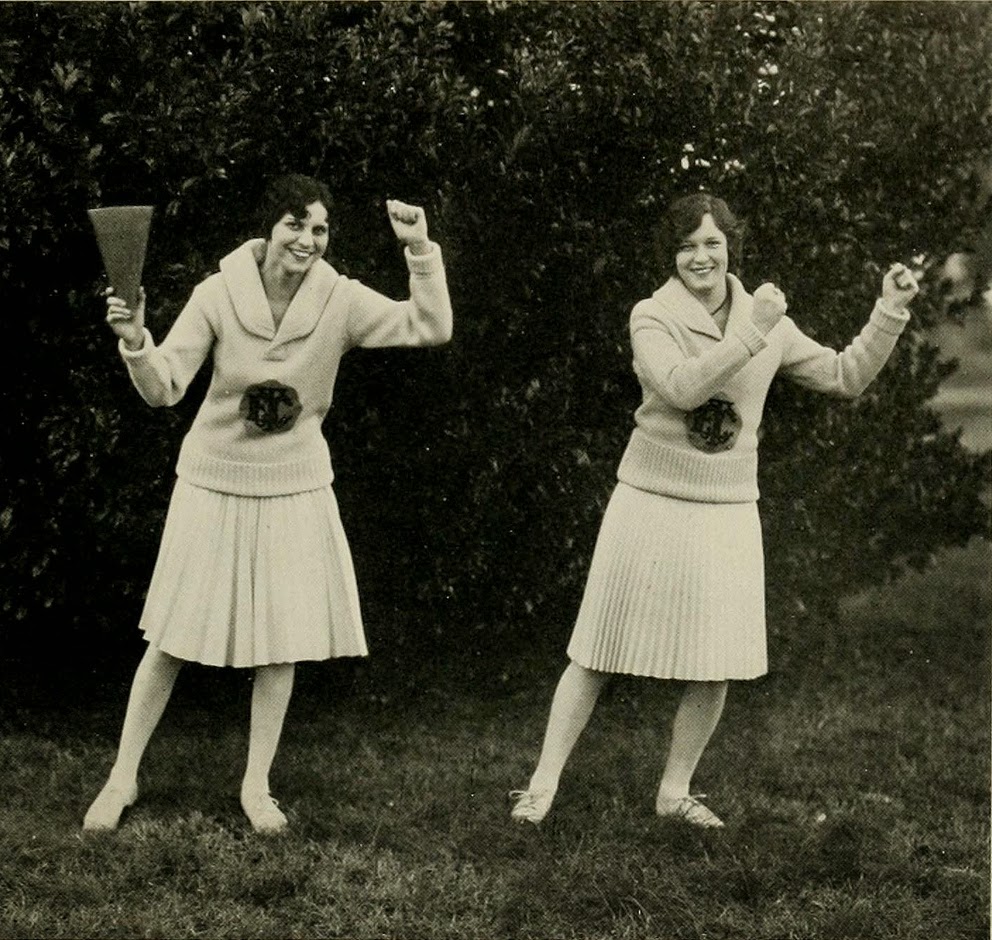
Cheerleaders, East Carolina Teachers College, 1930
Princeton alumnus Thomas Peebles helped carry the tradition westward when he introduced organized cheering to the University of Minnesota in 1884.
By the late 1890s, the term “Cheer Leader” was already in use. Records show that in 1897, Princeton football officials designated three students—Thomas, Easton, and Guerin—as official “Cheer Leaders,” showing the growing importance of the role.
Cheerleading continued to gain recognition with the establishment of the first cheerleading fraternity, Gamma Sigma, in 1903.
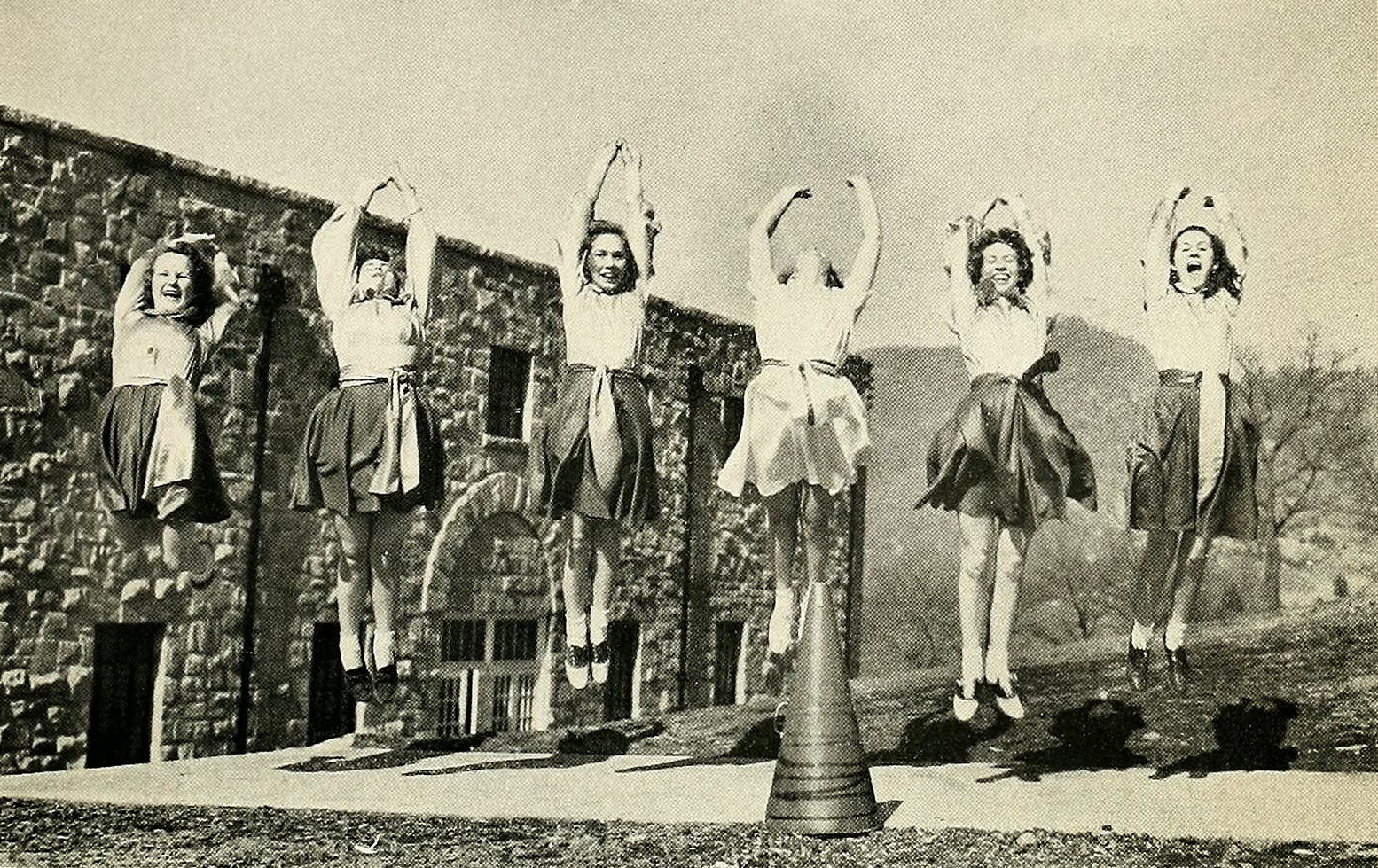
Cheerleaders, Western Carolina University, 1940.
Although women were allowed to join cheer squads at the University of Minnesota in 1923, the activity remained largely male-centered for years afterward.
Publications from the late 1920s still described cheerleaders using terms such as “chap,” “fellow,” and “man.”
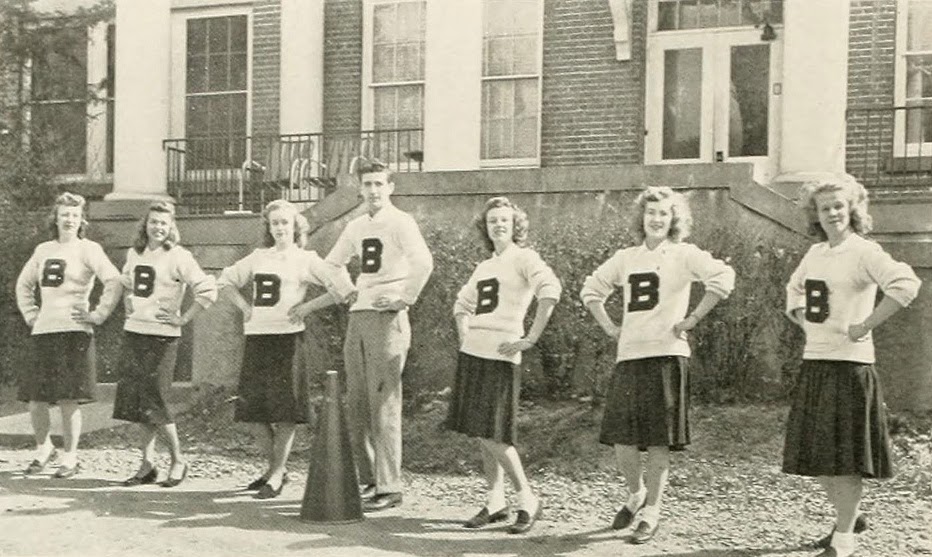
Cheerleaders, Asheville-Biltmore College, 1948.
This perception did not begin to change significantly until World War II, when many male students were drafted into military service.
With men away at war, women began filling roles on the sidelines, and as noted by Kieran Scott in Ultimate Cheerleading, “Girls really took over for the first time.”
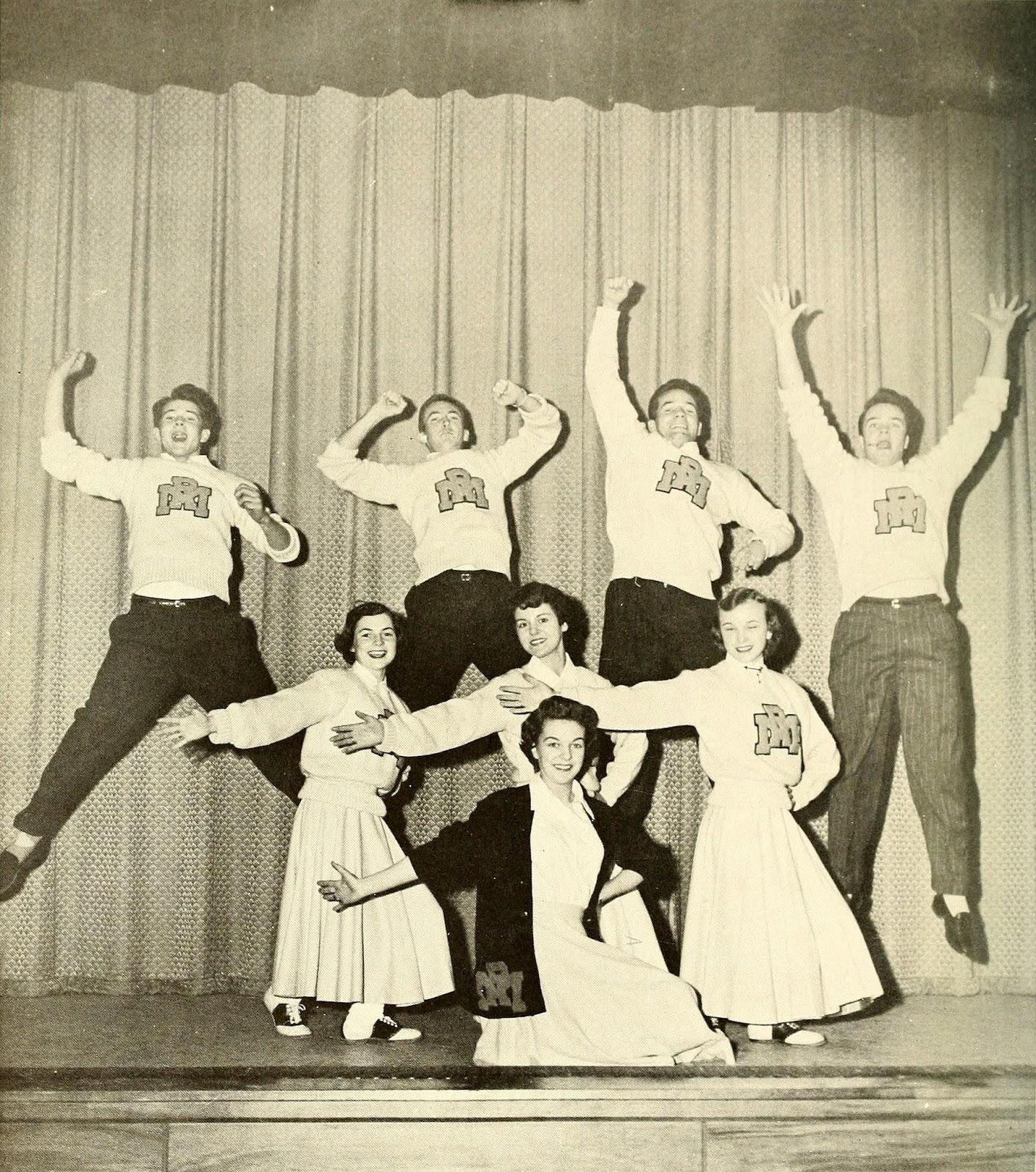
Cheerleaders, Rocky Mount High School, 1954.
The postwar years cemented the shift. By the 1950s, women dominated the field, and cheerleading became an expected part of school life at nearly every level, from youth leagues to universities.
A 1955 overview of the activity even remarked that while boys occasionally joined squads at larger schools, “cheerleading is likely to remain solely a feminine occupation.”
This period also brought a growing sense of style, with uniforms, choreography, and accessories such as pompoms becoming central to the image of the cheerleader.
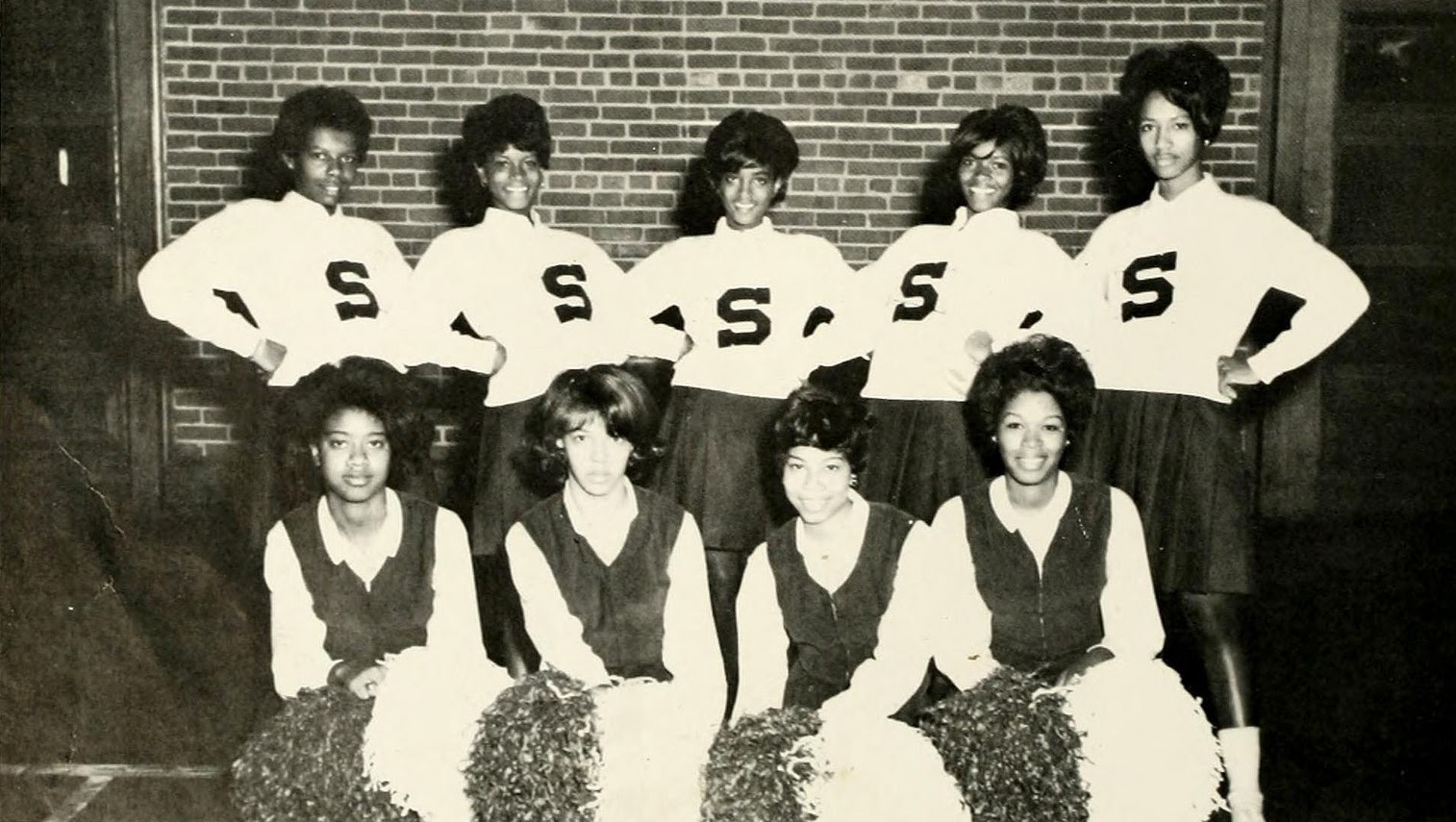
Cheerleaders, Shaw University, 1965.
By the 1960s, cheerleading had grown into a nationwide phenomenon. The National Cheerleaders Association (NCA) expanded its reach by hosting workshops for thousands of high school students across the country.
During this time, cheerleading innovator Lawrence “Herkie” Herkimer left his mark on the sport.
He not only founded a cheerleading supply company but also invented the famous “herkie jump”—where one leg bends toward the ground while the other stretches outward—and introduced the beloved “Spirit Stick,” which quickly became a staple of cheerleading tradition.
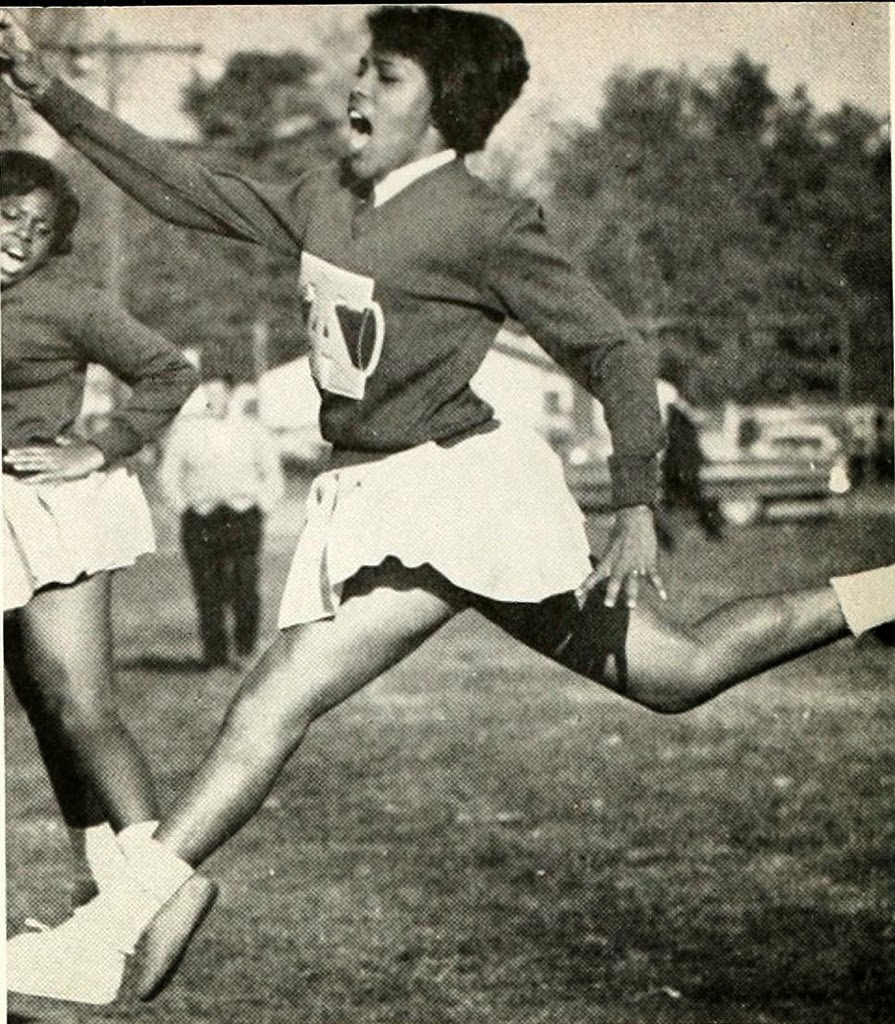
Cheerleaders, North Carolina Agricultural and Technical State University, 1967.
The following decades continued to reshape the activity. In the 1980s, cheerleading began to resemble the sport familiar today, incorporating demanding stunts, tumbling, and gymnastics.
Independent all-star teams formed outside of school programs, eventually leading to the establishment of the U.S. All Star Federation (USASF).
National competitions gained widespread attention, especially after ESPN aired the National High School Cheerleading Competition for the first time in 1983.

Cheerleaders, Fayetteville State University, 1974.
With new challenges came the need for greater safety. In 1987, the American Association of Cheerleading Coaches and Advisors (AACCA) was created to establish universal safety standards.
Its work helped limit dangerous stunts and reduce injuries while allowing cheerleading to continue growing as a physically demanding and highly skilled sport.
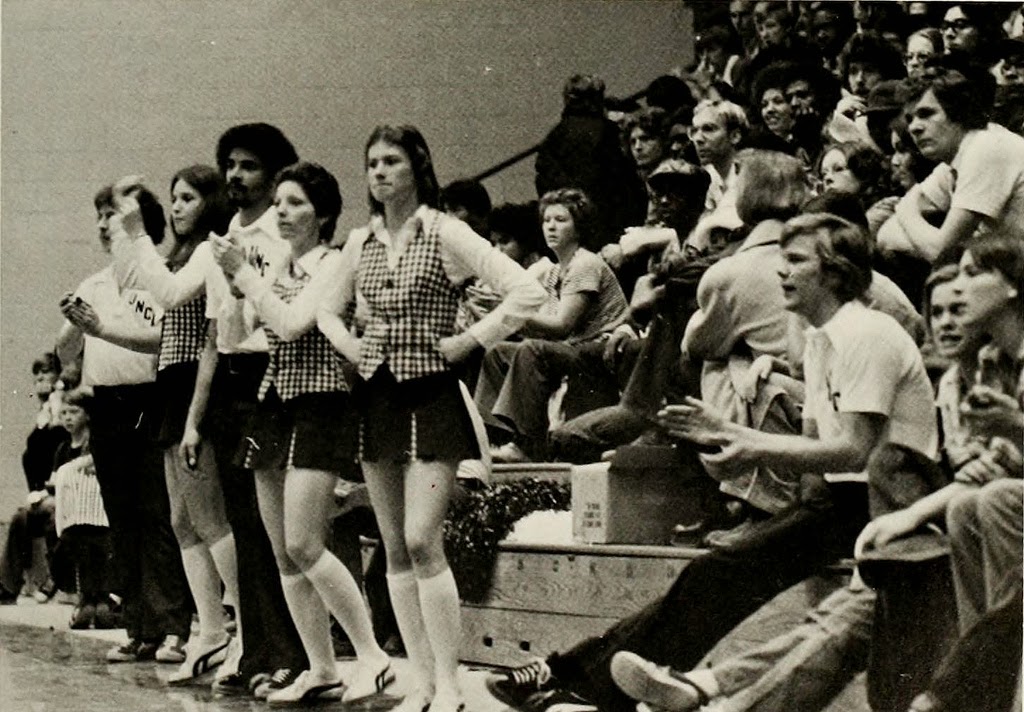
Cheerleaders, University of North Carolina at Asheville, 1976.
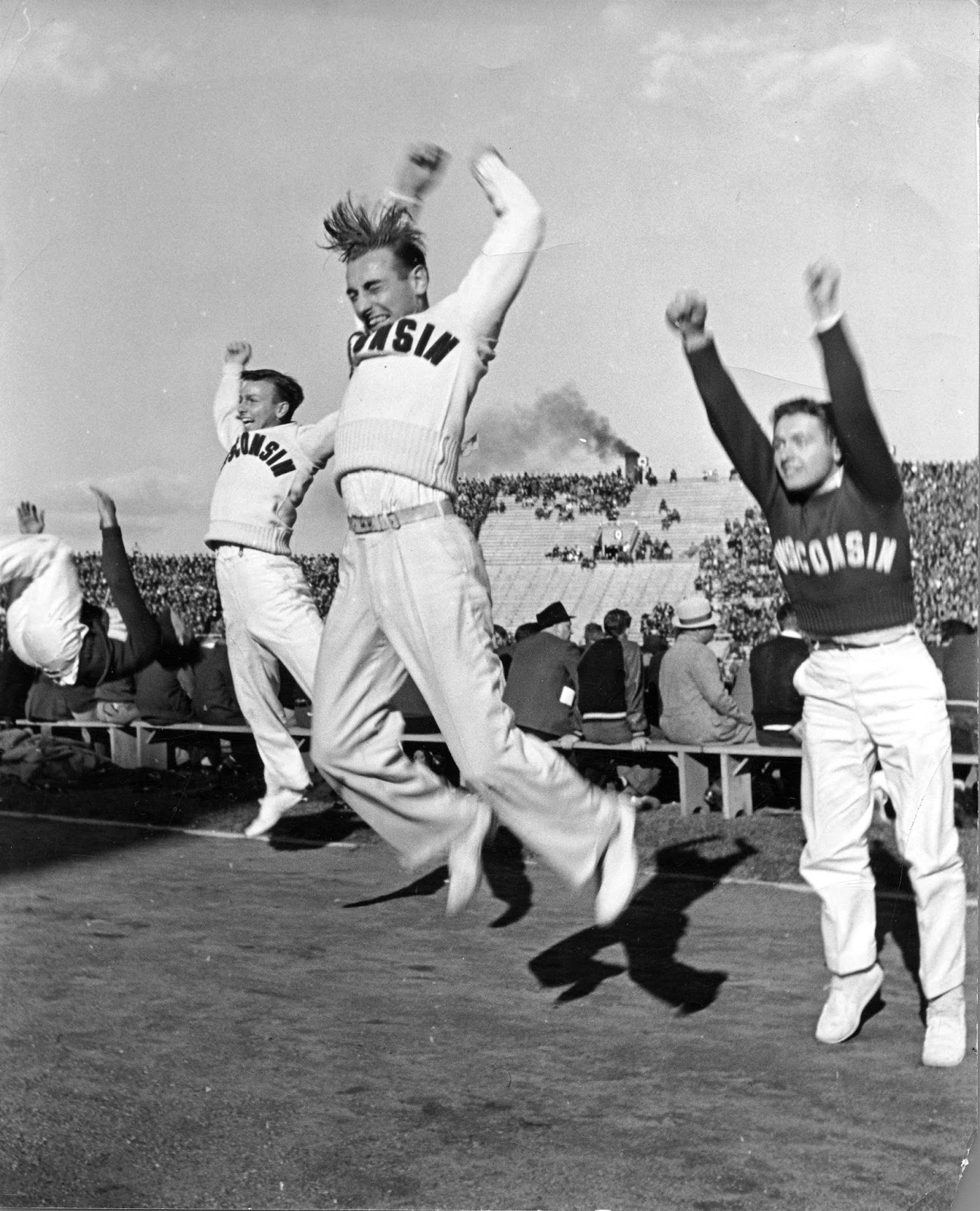
Male cheerleaders in action at Wisconsin-Marquette football game, 1939. (Alfred Eisenstaedt—The LIFE Picture Collection).
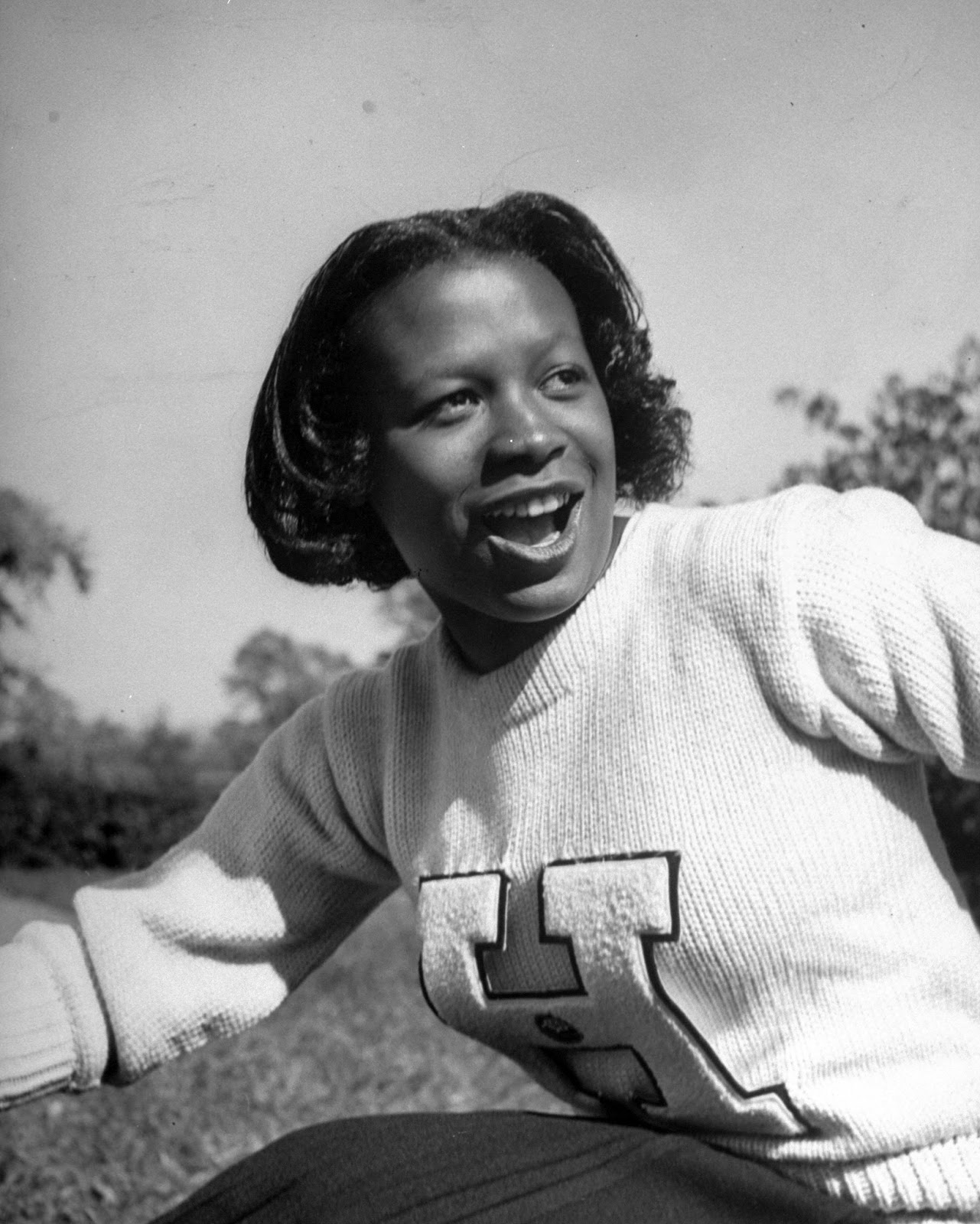
Howard University cheerleader Alfreda Young leading cheer during football game, 1946. (Alfred Eisenstaedt—The LIFE Picture Collection.)
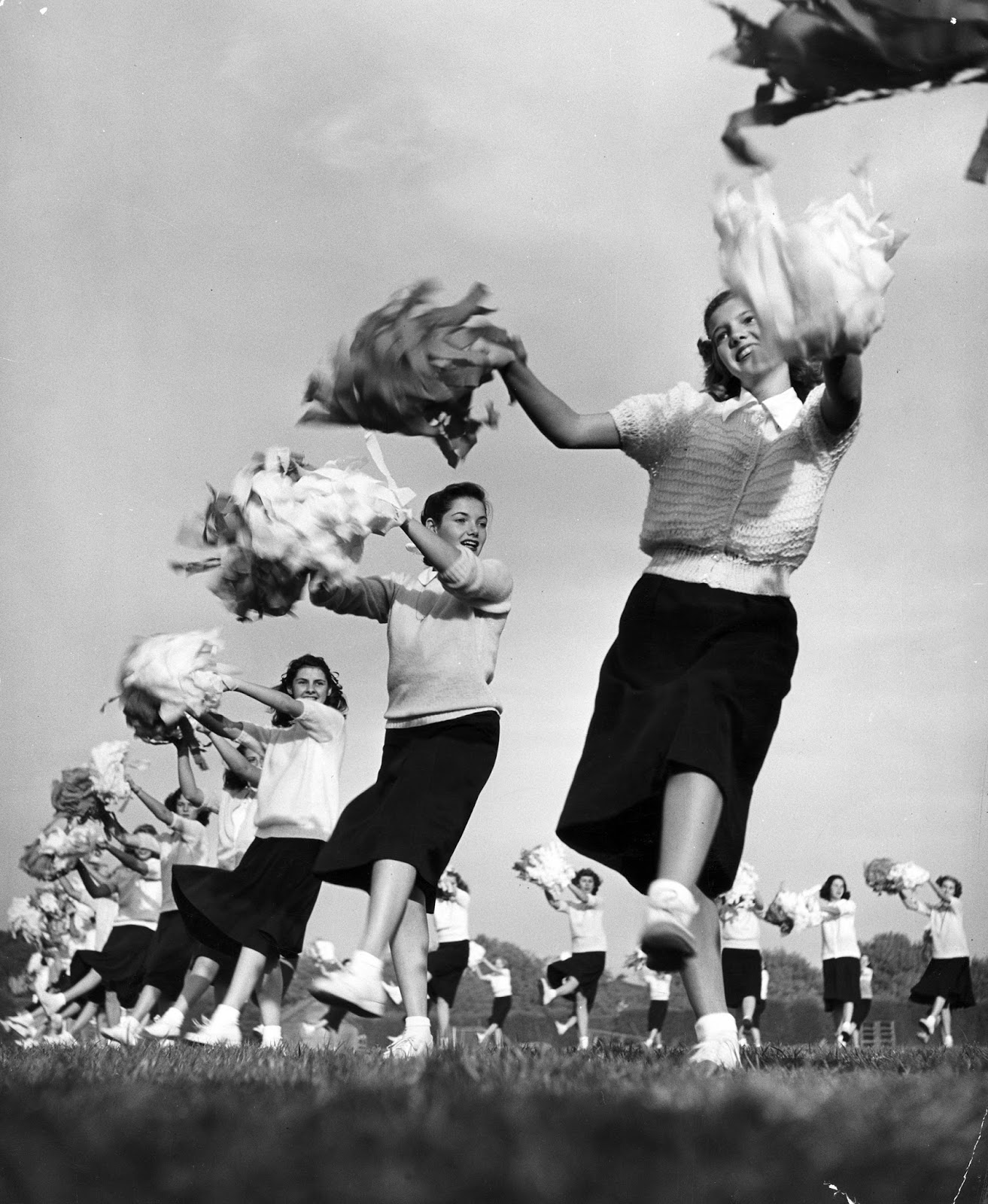
Sixty high school cheerleaders with crepe-paper pompons whip up football spirit, 1947. (Ralph Crane—The LIFE Images Collection.)
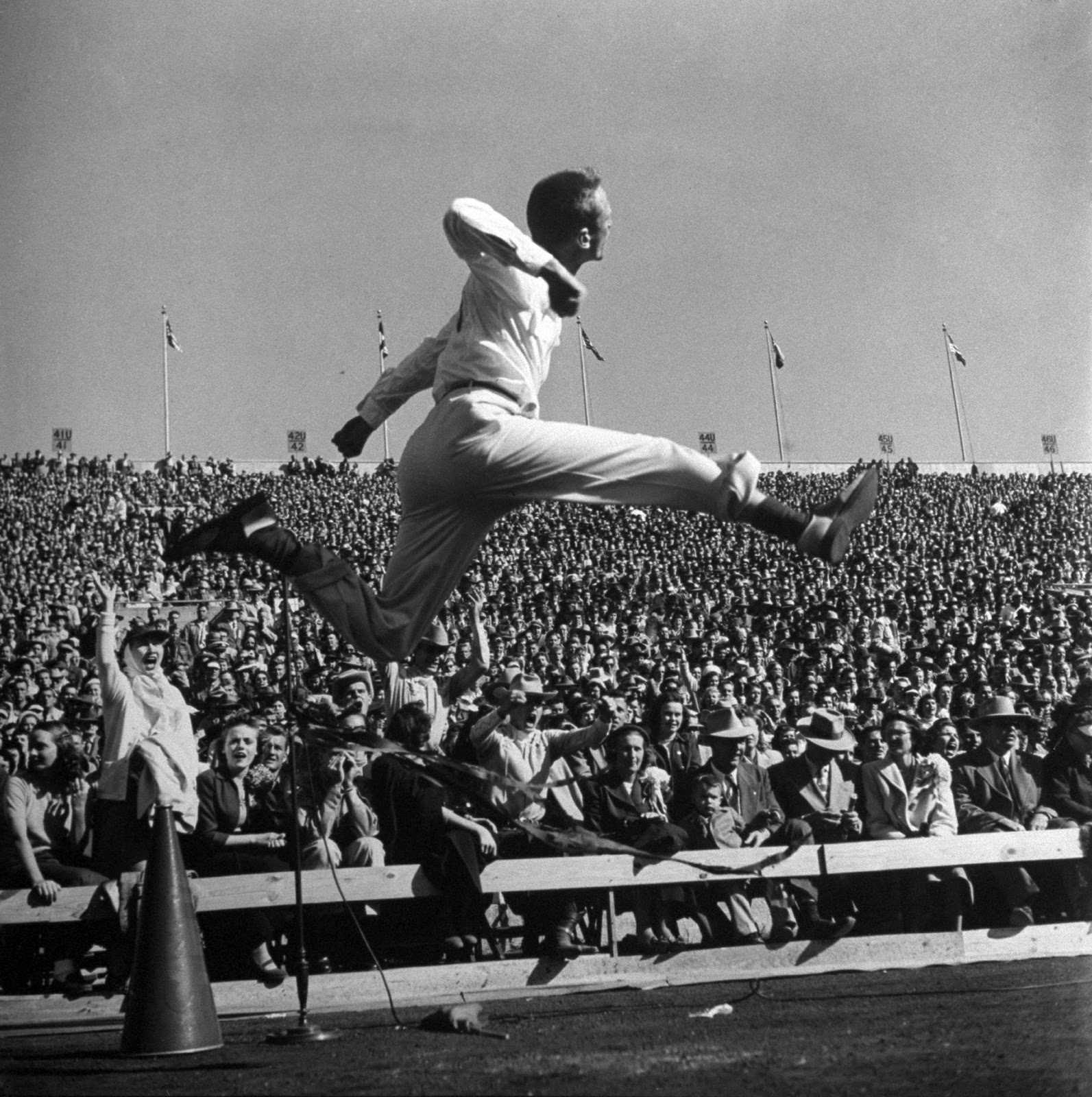
SMU cheerleader leaping high into air at University of Texas football game, 1950. (Loomis Dean—The LIFE Picture Collection.)
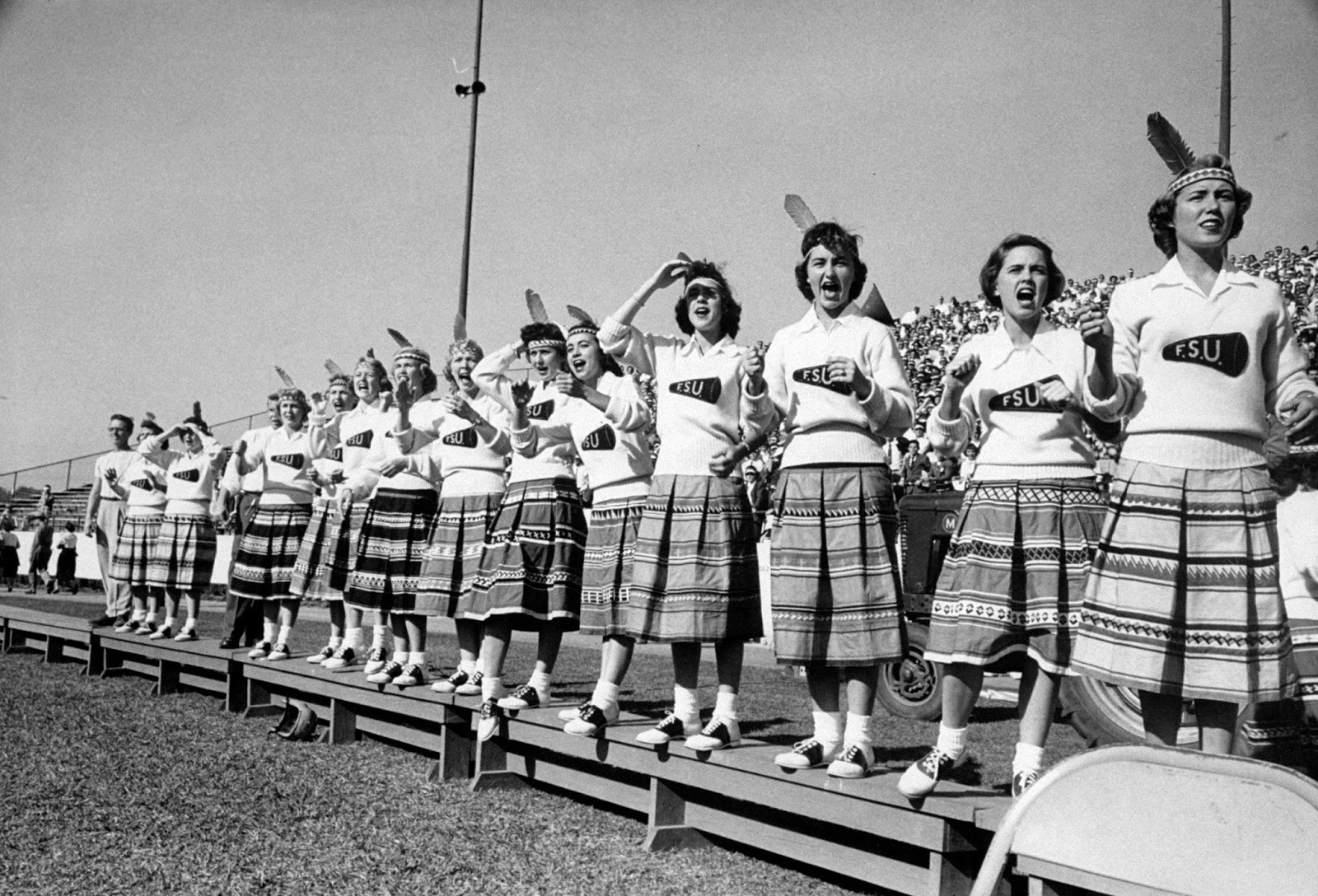
Cheerleaders at Florida State University, 1952. (Robert W. Kelley—The LIFE Picture Collection.)

Duke cheerleaders cheering among the fans in the bleachers, 1952. (Mark Kauffman—The LIFE Picture Collection.)
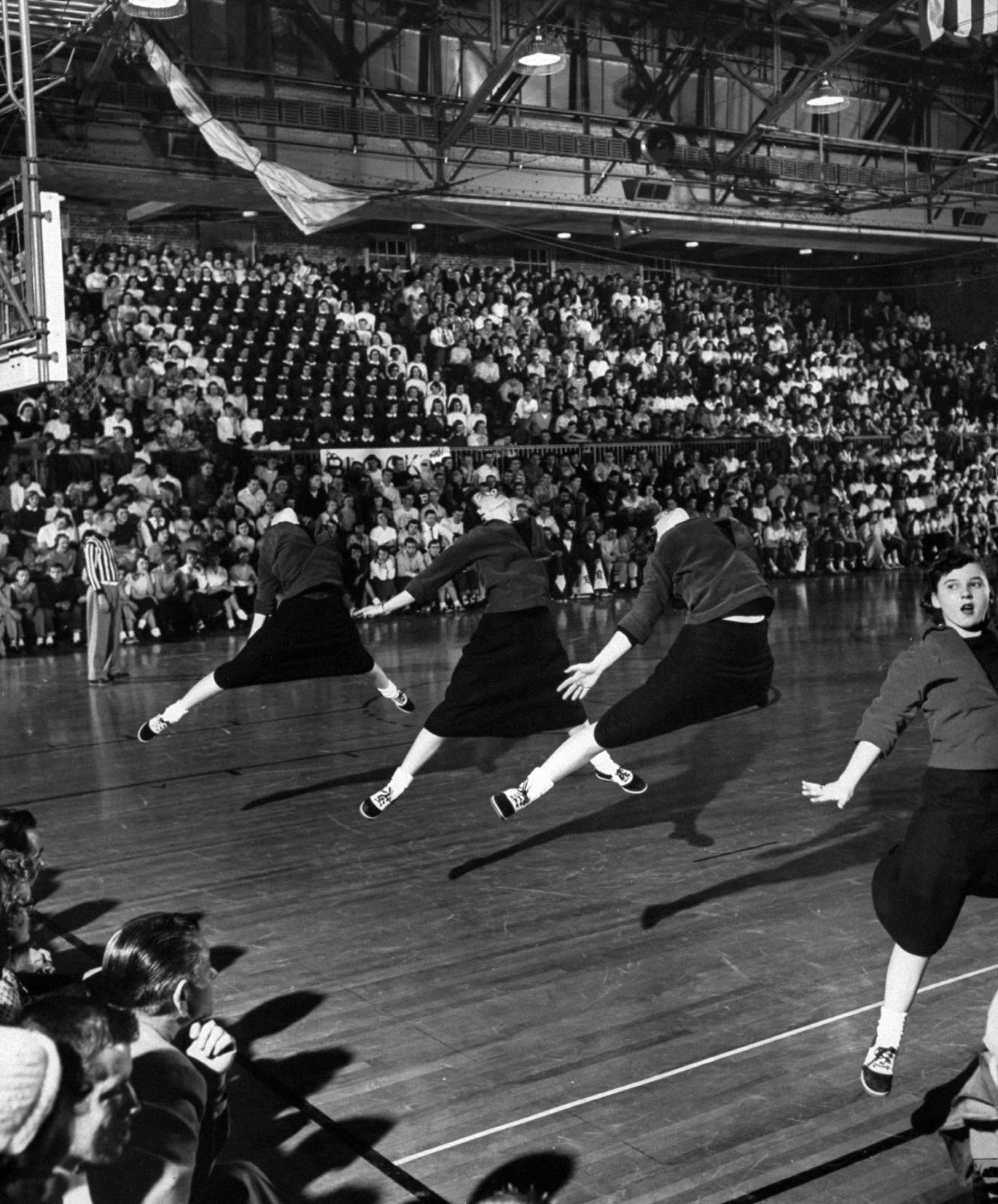
High school girl cheerleaders wearing sweaters and skirts leaping high in the air during their vigorous cheers at the basketball game, 1953. (Francis Miller—The LIFE Picture Collection.)
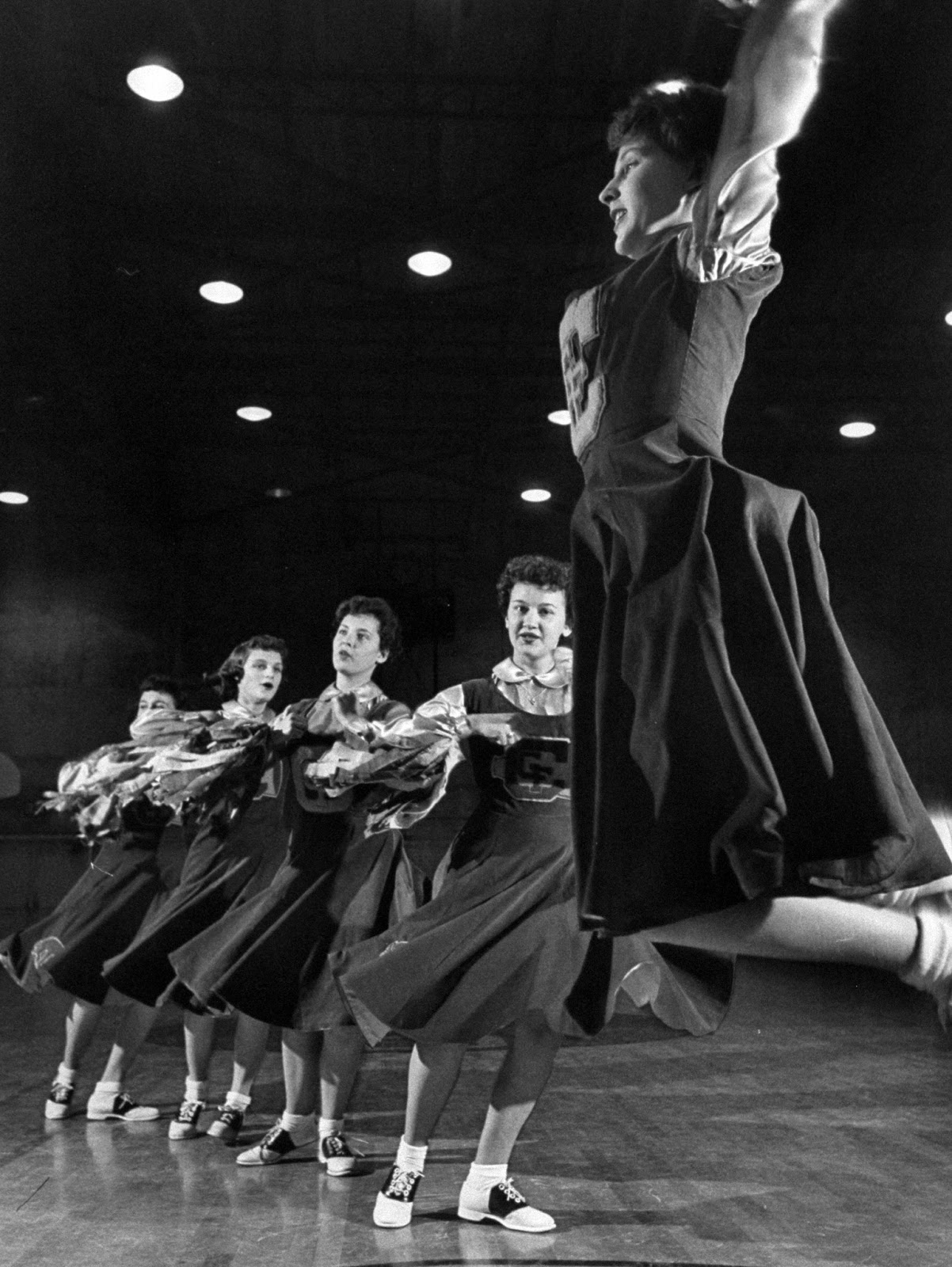
The girls of Central Catholic High School performing their cheerleading act in the gym, 1953. (Nat Farbman—The LIFE Picture Collection.)
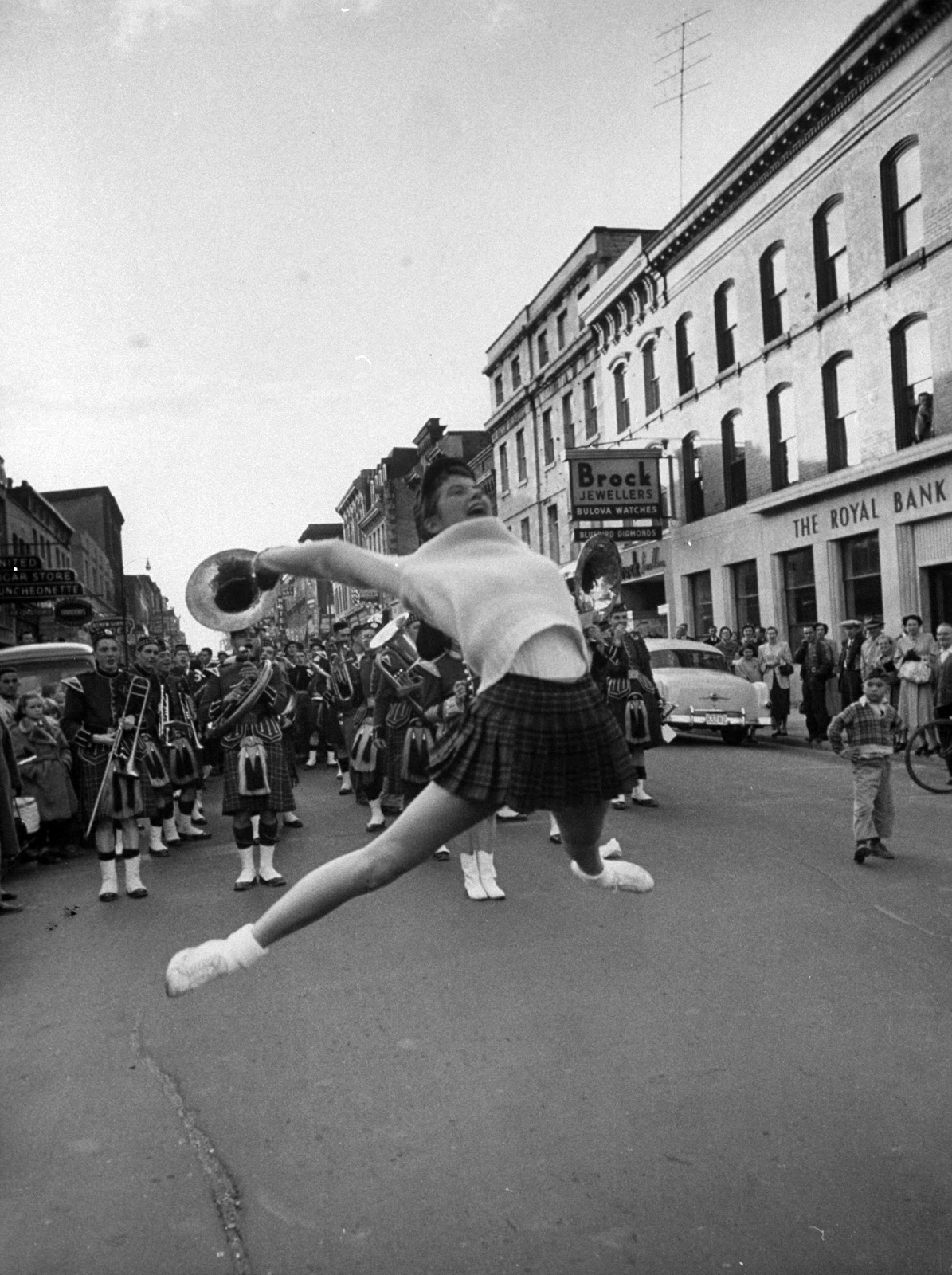
Cheerleaders parading prior to a football game between Queens College and the University of Toronto, 1954. (Lisa Larsen—The LIFE Picture Collection.)
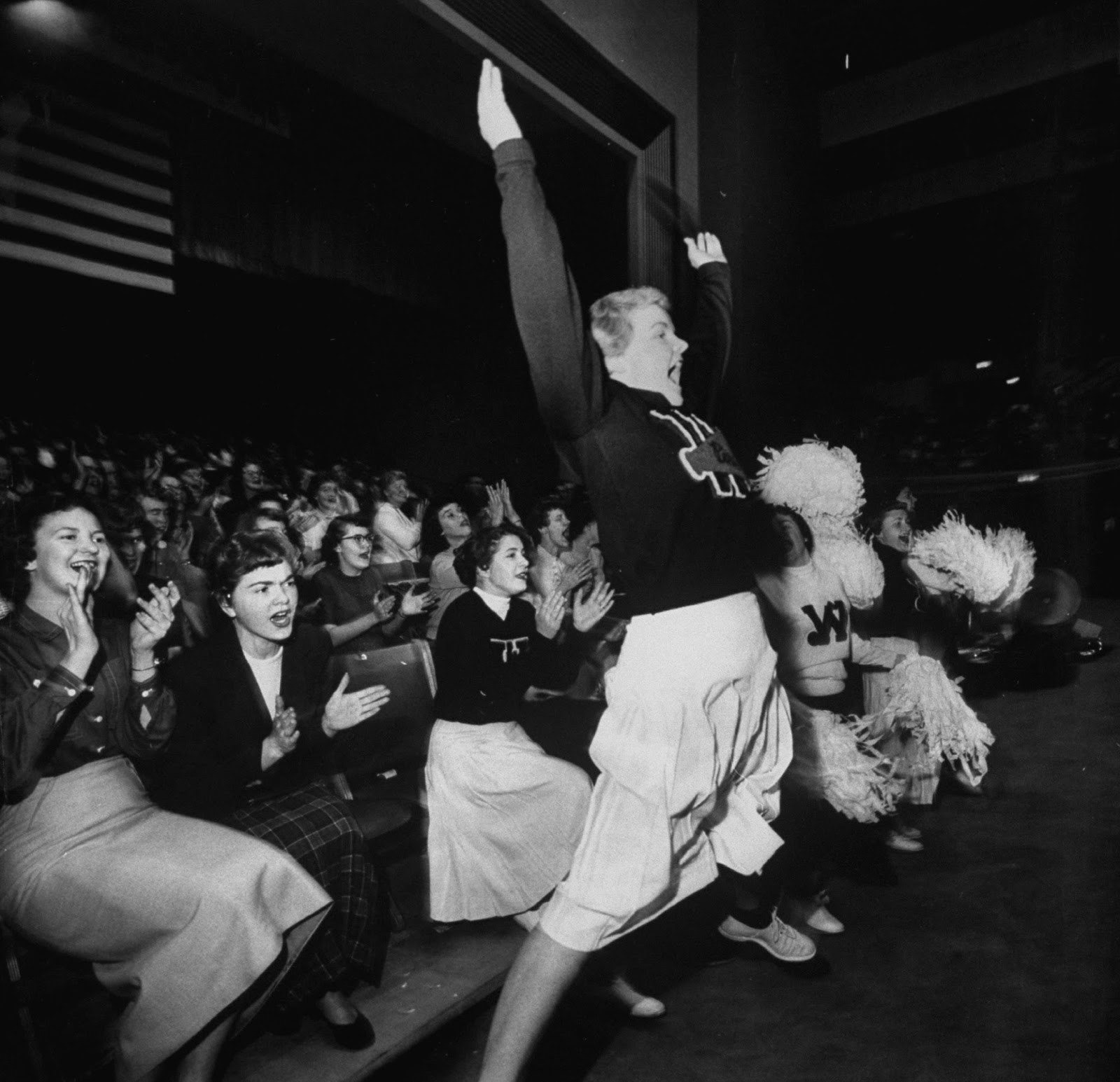
Cheering section of cheerleaders in Spokane Coliseum, 1954. (J.R. Eyerman—The LIFE Picture Collection.)
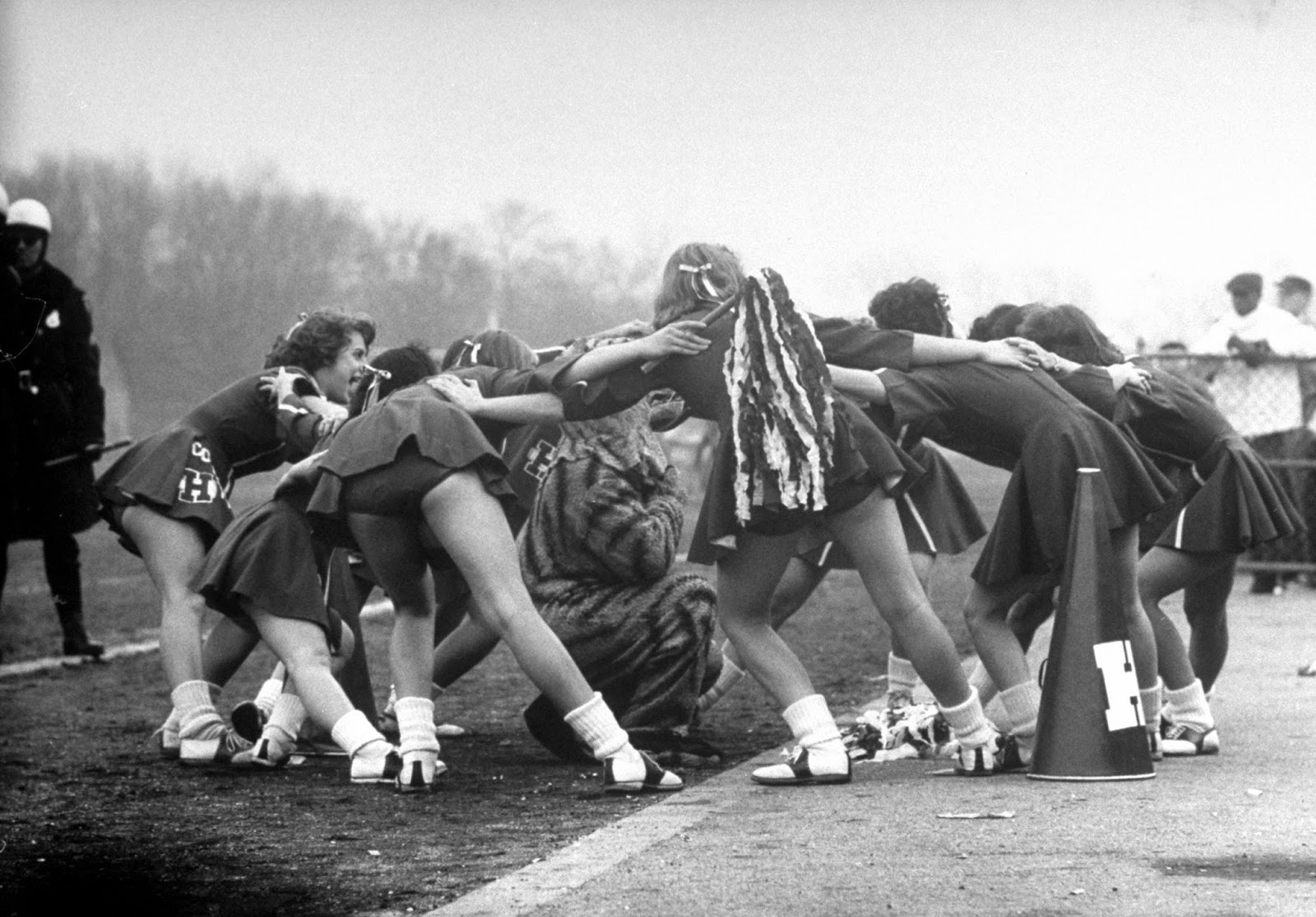
Hempstead High School cheerleaders chanting a cheer as they encircle the school’s tiger mascot during game with Uniondale High, 1958. (Gordon Parks—The LIFE Picture Collection.)
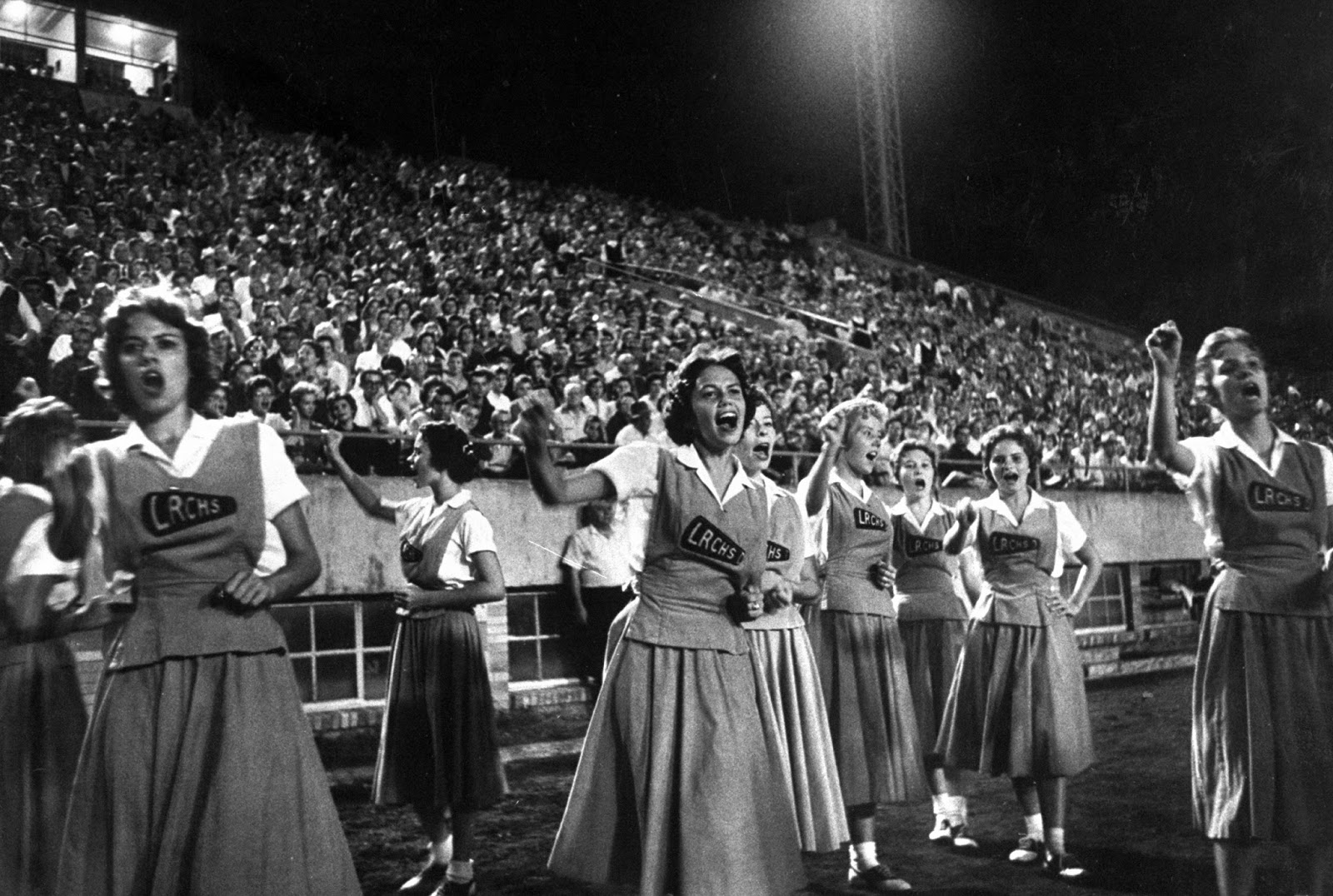
Cheerleaders at Little Rock high school game with Louisiana high school team, 1958. (Stan Wayman—The LIFE Picture Collection.)
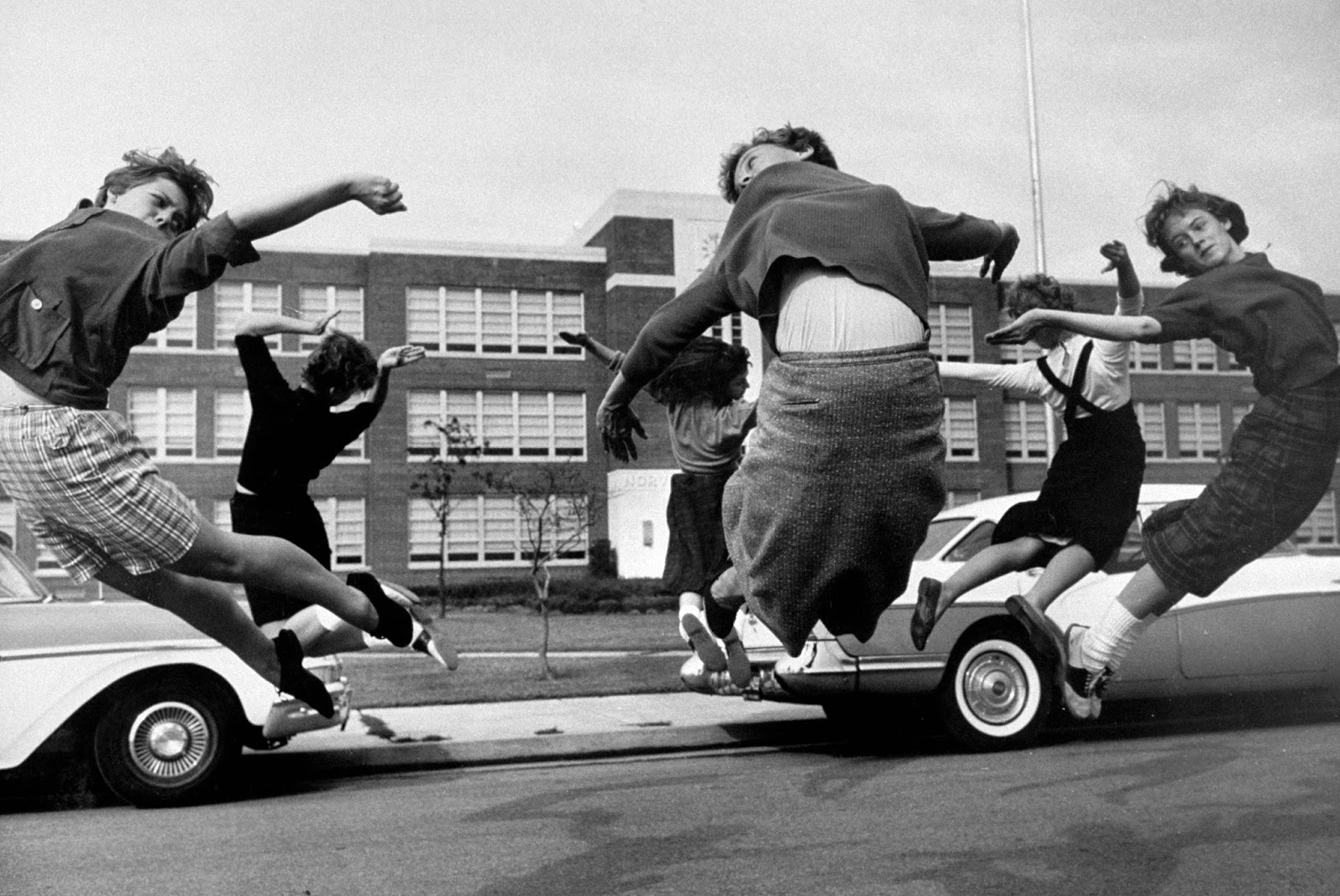
Students participating in a cheerleading practice, 1958. (Paul Schutzer—The LIFE Picture Collection.)

Members of the Kilgore Rangerettes, a dance/drill team, at the 1960 Cotton Bowl. (Robert W. Kelley—The LIFE Picture Collection.)
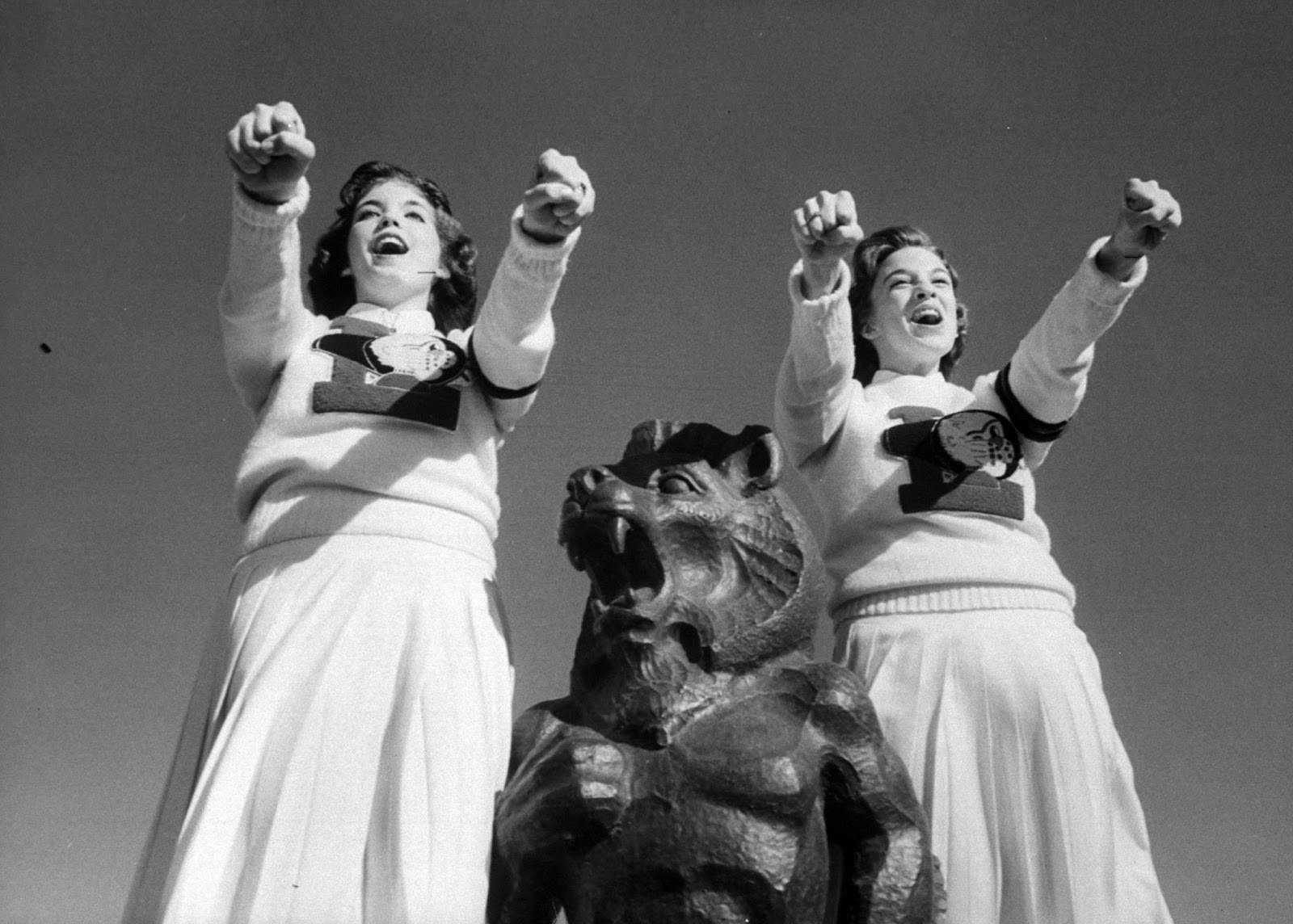
Lawrence High School cheerleaders during football game, 1960. (Francis Miller—The LIFE Picture Collection.)
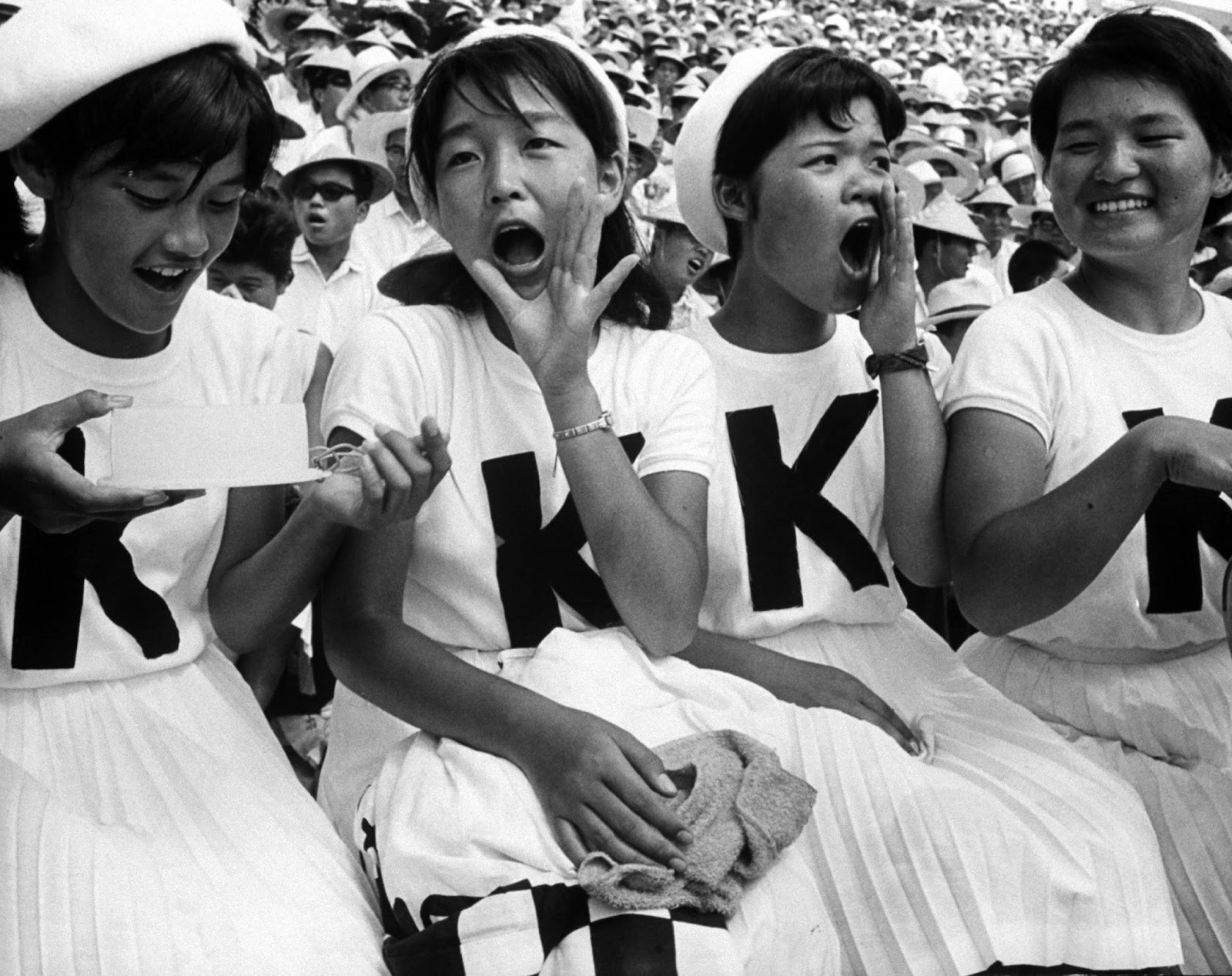
A group of cheerleaders rooting for their team, 1964. (Larry Burrows—The LIFE Picture Collection.)
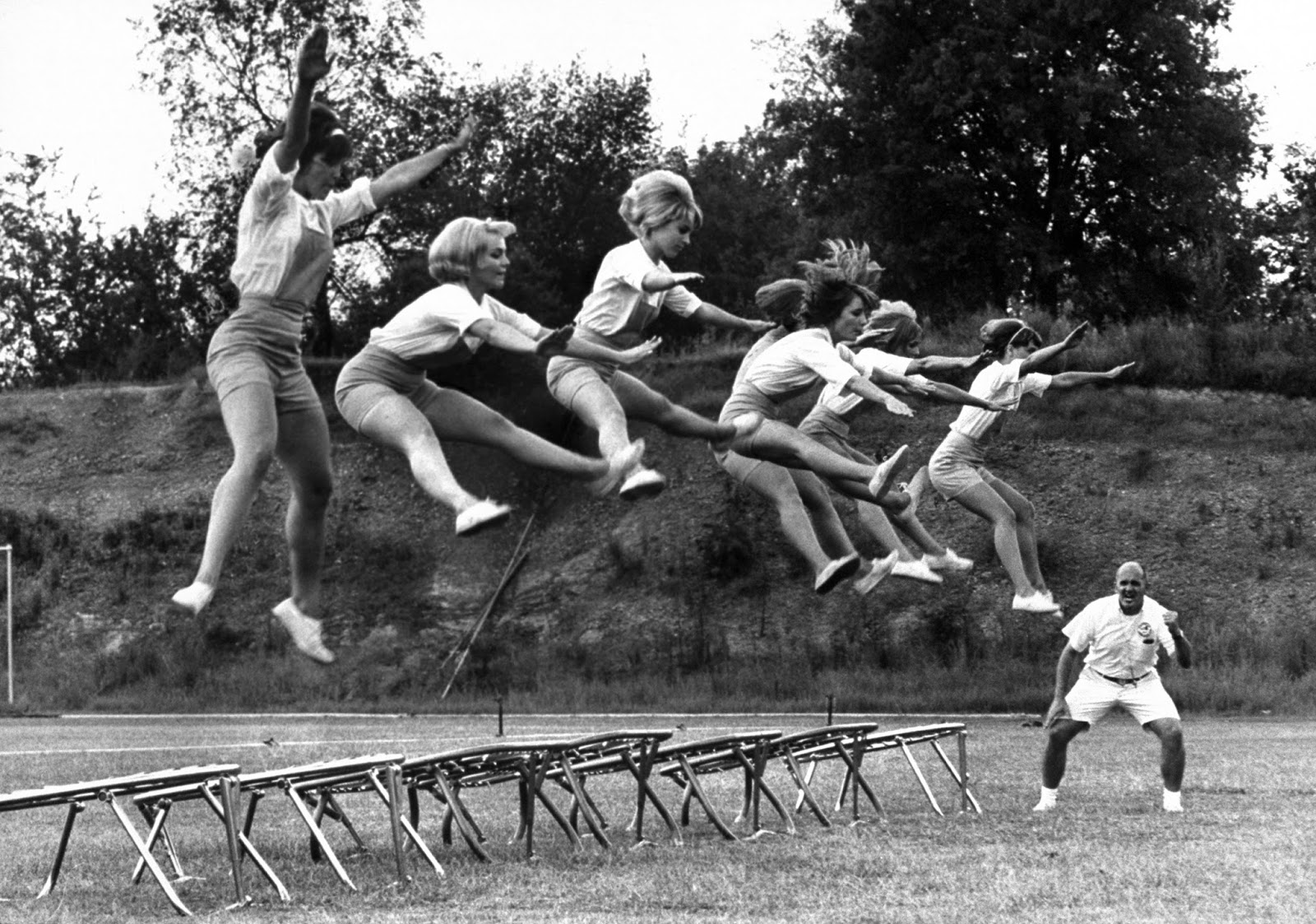
Cheerleaders training under Bill Horan, of the American Cheerleaders Assn.; Florence Alabama State College, 1965. (Lynn Pelham—The LIFE Picture Collection.)
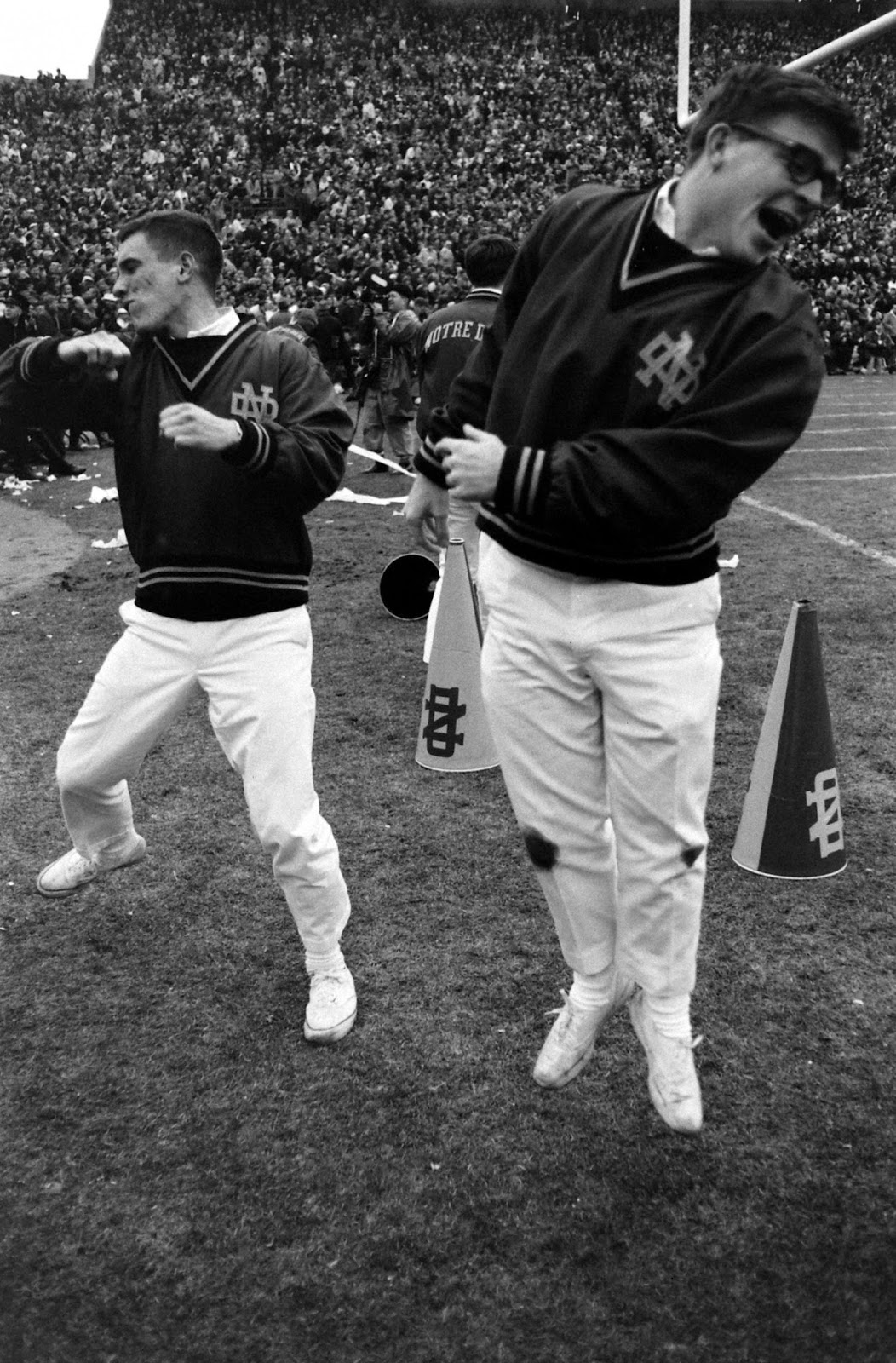
Notre Dame cheerleaders work the crowd during the 1966 “Game of the Century” against Michigan State, 1966. (Bob Gomel—The LIFE Picture Collection.)
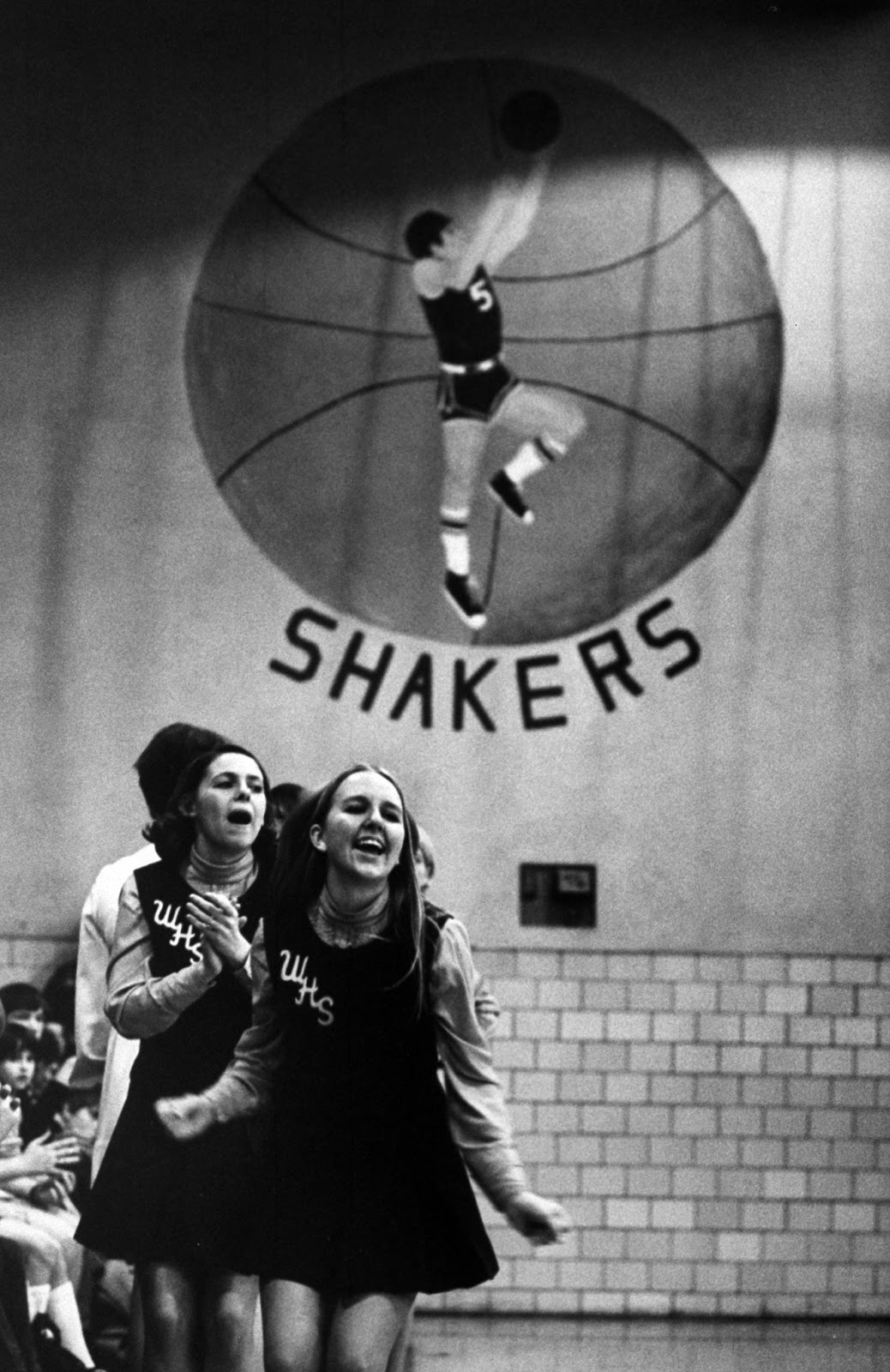
Cheerleaders cheering for a high school basketball game, 1971. (Grey Villet—The LIFE Picture Collection.)
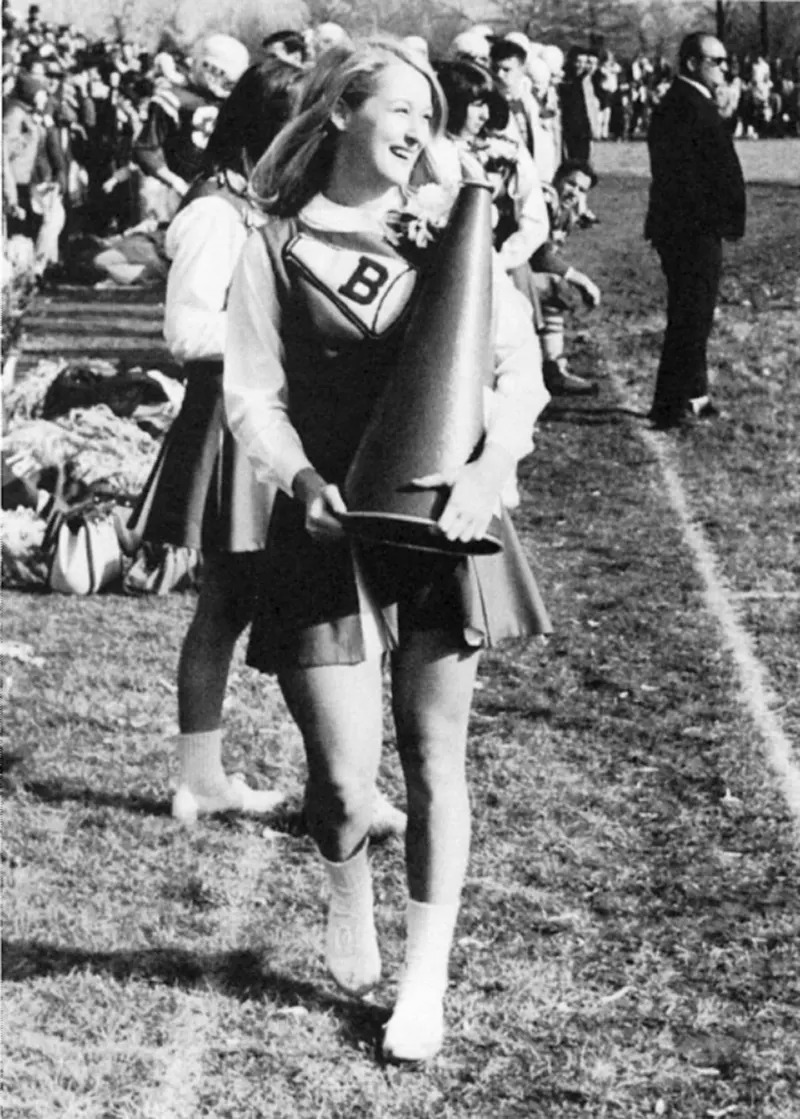
Cheerleader Meryl carried a cone at a game.
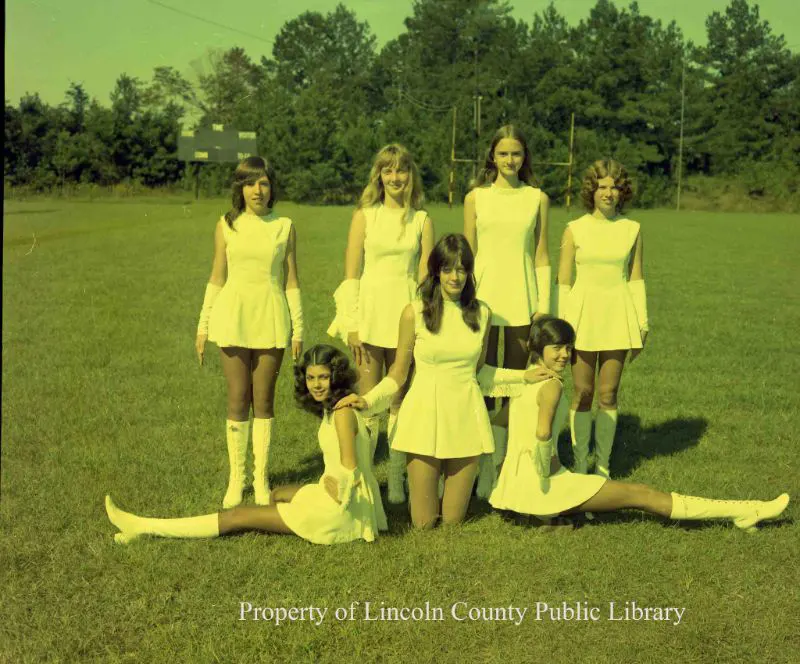
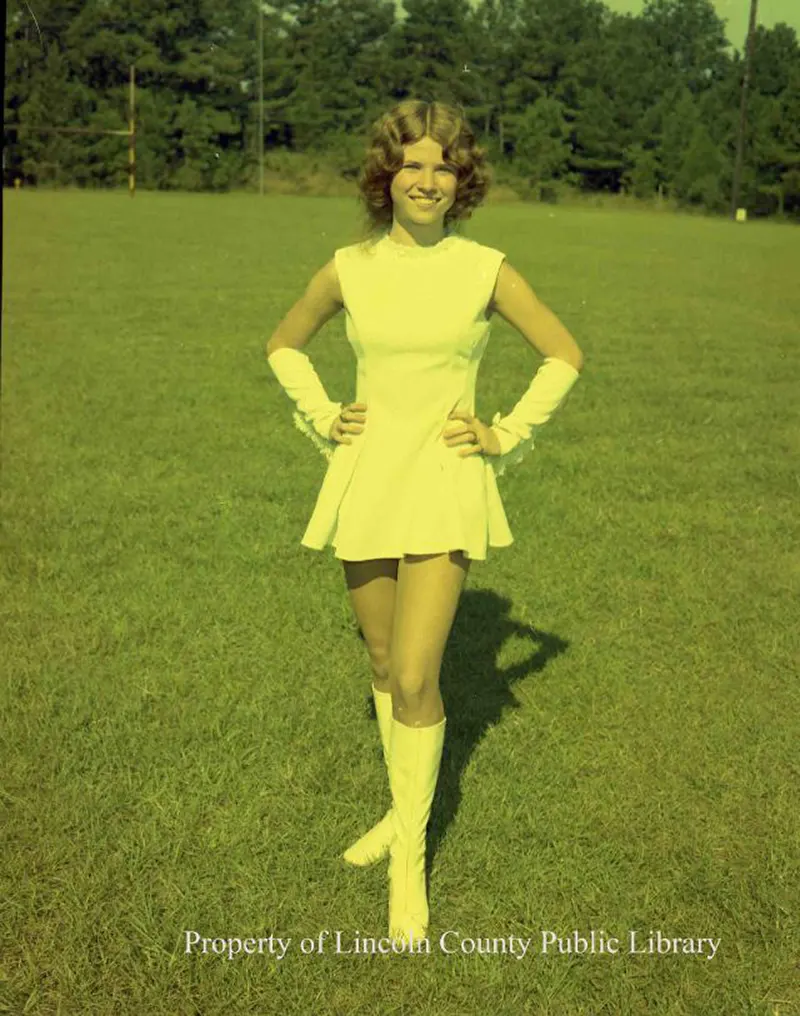
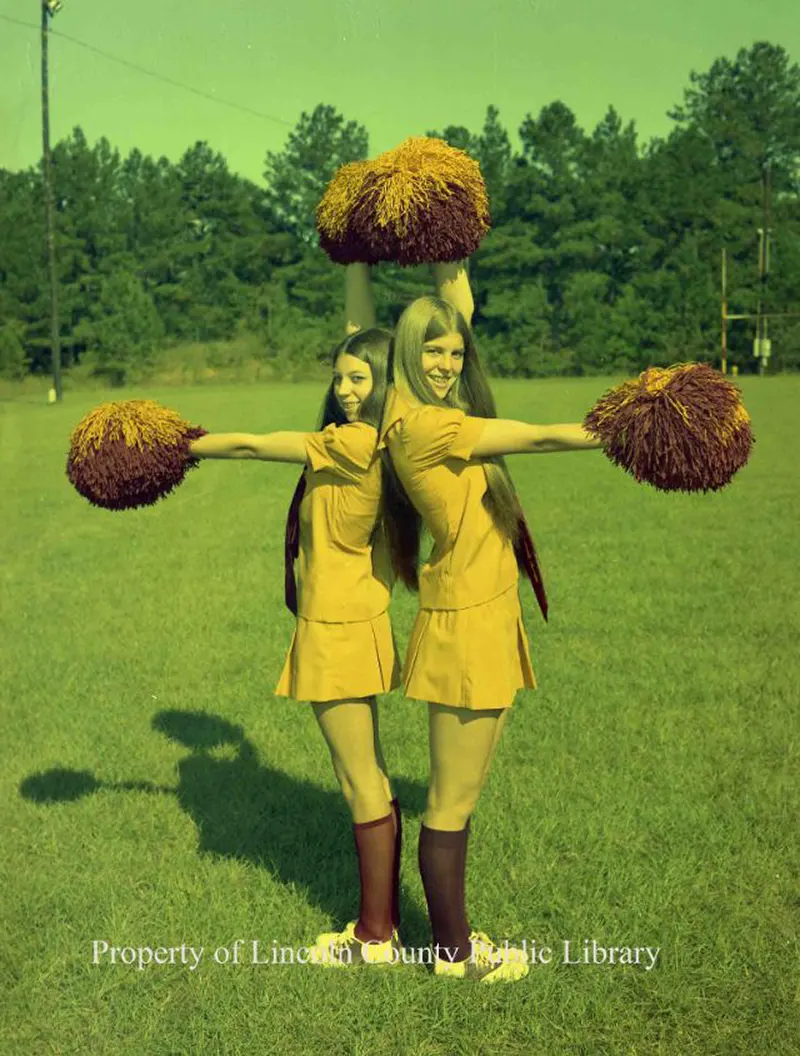
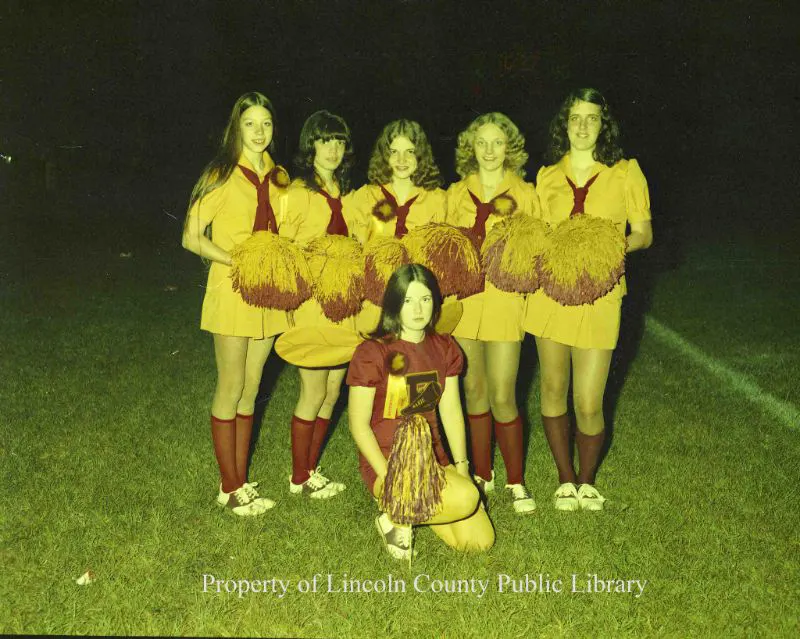
(Photo credit: As referenced / Wikimedia Commons / Pinterest).
